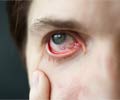Carbinoxamine Medication Information
Discover comprehensive details about Carbinoxamine, including its pronunciation, uses, dosage instructions, indications, and guidelines on how and when to take it or avoid it.
The updated prescription information covers potential side effects, precautions, warnings, and storage recommendations.
Additionally, explore the Carbinoxamine brands available in India and internationally, along with pricing information. For personalized advice, consult your healthcare provider.
Generic Name : Carbinoxamine Pronunciation : kar-bi-NOX-a-meen ICD Code : Y55.5 Therapeutic Classification : Antihistamines And DecongestantsBrand Names or Trade Names of Carbinoxamine
International :
Palgic
Why is Carbinoxamine Prescribed? (Indications)
This medication is an antihistamine, prescribed for allergy symptoms such as runny nose, watery/itchy eyes, rash, or hives. It reduces the effects of histamine in the body.When should Carbinoxamine not be taken? (Contraindications)
Contraindicated in children younger than 2 years of age, nursing mothers, and hypersensitivity.What is the dosage of Carbinoxamine?
Tablets- Usual Adult Dosage: 1 or 2 tablets (4 to 8 mg) 3 to 4 times daily.Usual Child’s Dosage: Six to eleven years – 1/2 to 1 tablet (2 to 4 mg) 3 to 4 times daily.
Oral Solution - Usual Adult Dosage: 1 or 2 teaspoonfuls (4 to 8 mg) 3 to 4 times daily.
Usual Child's Dosage (approximately 0.2 to 0.4 mg/kg/day, divided into 3 to 4 doses) Six to eleven years - ½ to 1 teaspoonful (2 to 4 mg) 3 to 4 times daily.
How should Carbinoxamine be taken?
It comes as a tablet and liquid to take by mouth, with or without food.What are the warnings and precautions for Carbinoxamine?
• Caution should be exercised in patients with history of asthma, glaucoma, difficulty in urinating, stomach or bladder obstruction, prostate problems, increased pressure in the eye, underactive thyroid, heart disease, high blood pressure, who are taking other medications, any allergy, elderly, children, during pregnancy and breastfeeding.• It may cause drowsiness or dizziness, do not drive a car or operate machinery while taking this medication.
What are the side effects of Carbinoxamine?
Body as a Whole - Hives, rash, anaphylactic shock, photosensitivity, excessive perspiration, chills, dryness of mouth, nose and throat.Heart - Low blood pressure, headache, palpitations, fast heart rate.
Blood - Anemia, decrease in platelets and white blood cells.
Central Nervous System - Sedation, sleepiness, dizziness, disturbed coordination, fatigue, confusion, restlessness, excitation, nervousness, tremor, irritability, sleeplessness, emotion, tingling, blurred vision, double vision, ringing in the ear, inflammation of the inner ear, hysteria, convulsions.
Gastrointestinal - Stomach upset, loss of appetite, nausea, vomiting, diarrhea, constipation.
Genitourinary - Urinary frequency, difficult urination, urinary retention, and early menses.
Respiratory - Thickening of bronchial secretions, tightness of chest and wheezing, nasal stuffiness.










